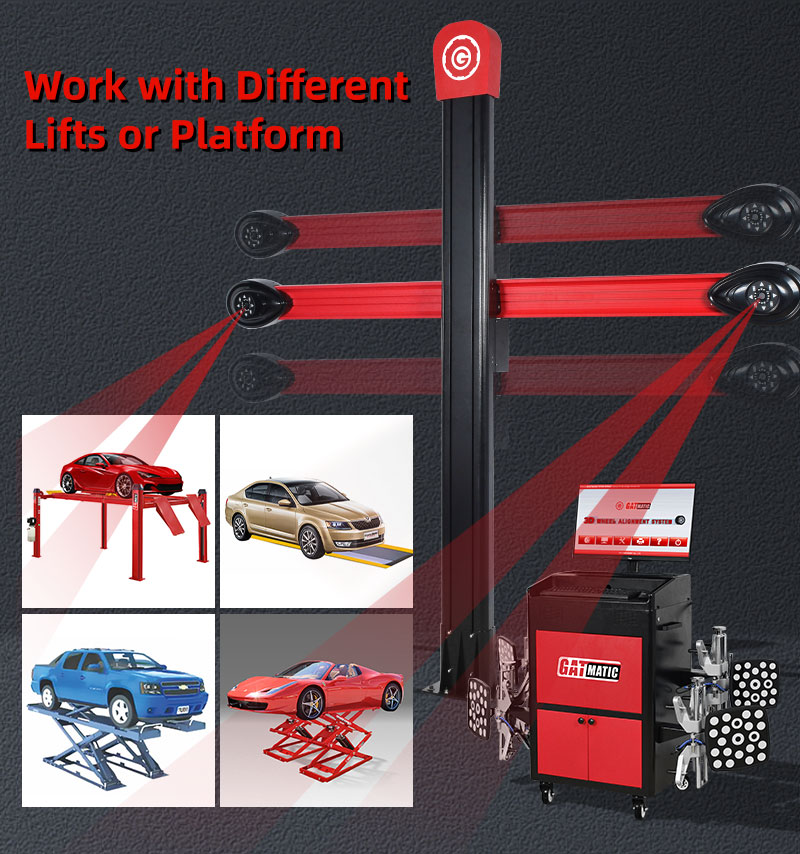Does a car need an alignment after replacing tie rods?
When it comes to vehicle maintenance, few things are as crucial as ensuring your car’s steering and suspension components are in top-notch condition. Tie rods are a critical part of your vehicle’s steering system, and when they show signs of wear and tear, it’s essential to replace them promptly. But does replacing tie rods mean that your car needs an alignment as well? In this article, we’ll dive deep into this question and provide you with valuable insights into the world of tie rods, alignments, and vehicle maintenance.

I. Understanding Tie Rods
Before delving into whether an alignment is necessary after tie rod replacement, let’s first understand what tie rods are and what role they play in your vehicle’s steering system.
II. What Are Tie Rods?
Tie rods are integral components of a car’s steering mechanism. They connect the steering rack to the steering knuckle on each wheel, allowing the driver to control the vehicle’s direction. Tie rods are responsible for transmitting the steering input from the steering wheel to the wheels, ensuring that the car steers in the intended direction.
III. Signs of Worn Tie Rods
Over time, tie rods can wear out due to constant exposure to road conditions, including potholes, bumps, and everyday wear and tear. Some common signs of worn tie rods include:
- Uneven Tire Wear: When tie rods are compromised, it can lead to uneven tire wear, which is often noticeable as excessive wear on the inner or outer edges of the tires.
- Steering Play: You may notice excessive play or looseness in the steering wheel, making it difficult to maintain a straight course.
- Vibration and Shaking: Worn tie rods can cause vibrations and shaking in the steering wheel, especially at high speeds.
- Off-Center Steering Wheel: If your steering wheel is off-center when your car is driving straight, it could be a sign of tie rod issues.
IV. Replacing Tie Rods
When you encounter any of the above signs or suspect that your tie rods are worn, it’s essential to have them inspected by a qualified mechanic. If they determine that your tie rods need replacement, it’s crucial to follow through with this repair promptly to ensure your safety on the road.
V. The Replacement Process
Replacing tie rods involves the following steps:
- Lift and Secure the Vehicle: The car is lifted on a hoist, and the wheels are removed.
- Access the Tie Rods: The mechanic gains access to the tie rods by removing various components, including the outer tie rod end and any associated hardware.
- Remove and Replace: The old tie rods are removed and replaced with new ones, ensuring that they are correctly aligned.
- Alignment Check: After replacing the tie rods, an alignment check is performed to assess the current alignment status.
VI. Alignment After Tie Rod Replacement
Now, let’s address the main question: Does a car need an alignment after replacing tie rods?
VII. Yes, Alignment Is Necessary
In most cases, an alignment is necessary after replacing tie rods. Here’s why:
- Disruption in Alignment: The process of replacing tie rods can disrupt the vehicle’s alignment settings. Adjustments made during the tie rod replacement process can affect the angle of the wheels.
- Ensuring Proper Steering: Proper alignment is crucial for ensuring that your car steers correctly and maintains stability on the road. Misaligned wheels can lead to handling issues and uneven tire wear.
- Optimizing Tire Life: An alignment helps optimize tire life, preventing premature tire wear and reducing the need for frequent tire replacements.
Conclusion
In conclusion, replacing tie rods in your car is essential for maintaining safe and effective steering. However, it is equally important to have a professional alignment performed after tie rod replacement to ensure that your vehicle’s wheels are correctly aligned. This not only enhances safety but also extends the lifespan of your tires and improves overall handling. So, if you’ve recently replaced your tie rods or are planning to do so, don’t forget to schedule an alignment to keep your car in top shape.
FAQs
1. How often should tie rods be replaced?
Tie rods typically last between 70,000 to 100,000 miles. However, they should be inspected regularly and replaced if signs of wear and tear are evident.
2. Can I align my car myself after tie rod replacement?
While it’s possible to attempt a DIY alignment, it’s highly recommended to have a professional perform the alignment to ensure accuracy and safety.
3. What happens if I neglect alignment after tie rod replacement?
Neglecting alignment can lead to issues such as uneven tire wear, poor steering control, and decreased vehicle stability.
4. How much does a professional alignment cost?
The cost of a professional alignment can vary depending on your location and the type of vehicle, but it typically ranges from $50 to $150.
5. Can misaligned wheels affect fuel efficiency?
Yes, misaligned wheels can lead to increased rolling resistance, resulting in decreased fuel efficiency over time.
Describe Your Needs In Detail!
We will carefully evaluate your needs and give professional solutions.


